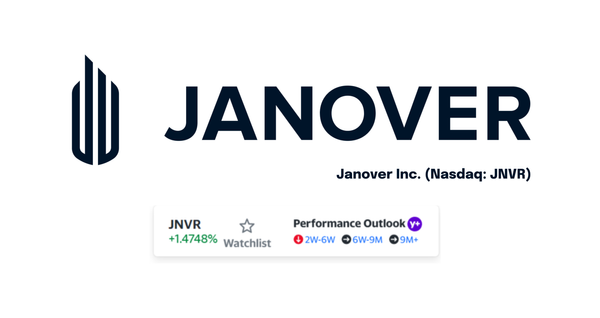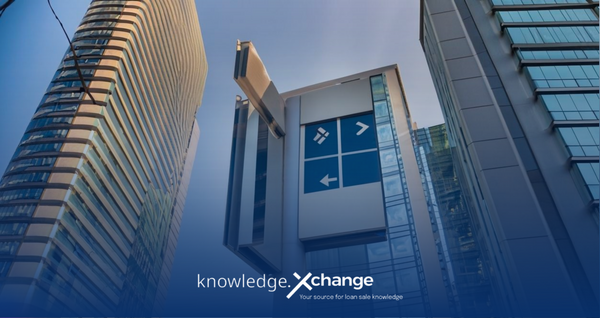Maximize Loan Sales and Minimize Effort: The New Way for Bankers

The commercial real estate (CRE) industry was late to the technology game—but it’s been catching up quickly. As a trailblazer and thought leader of online CRE transactions, Andre Cuadrado, Xchange.Loans' very own CEO, was excited about participating in a technology-focused panel discussion at the 11th Annual IMN Bank Special Assets & Credit Officer’s Forum in Miami as a panelist. He had an intriguing discussion about the role of technology in loan sales and distressed asset dispositions, along with Jeff Azuse, senior vice president, Hilco Real Estate; Cliff Bargeron, managing director, Garnet Capital Advisors; and Buddy Lee, CEO, Seven Hills Auctions. The panel was moderated by Christopher Swieca, senior vice president, Wintrust Financial Corporation.
Here are some key take-aways from the conversation.
The state of the market
You might recall that, at the start of the pandemic, many buyers raised funds in anticipation of a flood of distressed debt coming to market—but that flood hasn’t materialized. As Garnet Capital Advisors’ Cliff Bargeron said, now it’s like shopping for a car—you’re unlikely to find exactly what you’re looking for and, if you do find something you want to drive away in, it’s going to cost you more than you were expecting to pay.
From the buyer’s perspective, the excess of dry powder is exacerbating the problem. Buyers who previously focused solely on deeply distressed notes are moving up-market in search of prospects, buying sub-performing loans and even exploring new asset classes. Competition is increasing for the limited number of assets that come on the market. In addition, sociopolitical and macroeconomic issues continue to foster volatility and uncertainty, adding to the difficulty of making deals.
Despite these headwinds, there are signs that activity is picking up. Hilco Real Estate’s Jeff Azuse noted that buyers are starting to raise their pricing to draw out distressed debt that’s been sitting on the sidelines. However, lower returns necessitate reducing transaction fees as much as possible. Against that backdrop, we discussed the various paths sellers are taking to market their distressed assets to buyers and execute sales, and the role technology is playing in facilitating—or impeding—transactions.
A spectrum of sales channels
As we’ve discussed previously on Knowledge Exchange' Six Ways to Sell Non-Performing Loans, sellers have several traditional channels for selling distressed CRE loans, some more technology-enabled than others. Some banks try to sell distressed loans themselves; others use traditional brokerages, auction houses, or some combination of the two. A new option—an online marketplace like Xchange.Loans—has only recently become available.
The traditional channels sit along the spectrum of cost, risk, marketing approach and application of technology. Using a traditional brokerage involves the least risk, but is also the costliest, mainly because technology takes a back seat to full-service loan sales advisory service.
On the other end of the spectrum, sellers can handle every aspect of a sale themselves to reduce costs, but take on potential liability if the collateral has environmental issues or is a assisted living facility, for example. Also important, sellers who don’t take advantage of online channels run the risk of missing out on finding the best buyers for their loans. Between these extremes are online auctions and strategies involving a combination of brokerage services and auctions.
The role of technology: More options but no magic bullets
The traditional channels can work well for selling REO, but they don’t take advantage of today’s technology that can streamline and accelerate distressed CRE loan sales. On our IMN panel, we all agreed that auctions provide superior marketing, making it easier to reach a large pool of possible buyers. However, that benefit is diluted by the exorbitant fees charged on both sides of a deal. If it’s a distressed loan sale and you’re already selling at a loss, a 10% fee load doesn’t help.
As Andre pointed out during the discussion, that’s why we didn’t design Xchange.Loans to be a traditional auction platform. Instead, it’s an alternative that offers some of the same benefits as online auctions, but without the high fees and with a greater opportunity to optimize the recoverable cash value of a distressed loan sale. Bankers and special assets stakeholders can go full-service with us, or use our DIY technology, LenderDirect, to handle their own sales for a low monthly subscription fee—no brokers needed.
Know your buyer, know your asset
No sales channel is going to be everything to everybody. Before choosing a platform for online note sales, all panelists agreed that sellers need to know as much as possible about the potential pool of buyers they want to reach, because that helps determine the choice of sales channel. That pool will change according to the type of asset, its location and other factors, which is why it’s also imperative that sellers are familiar with every aspect of the loan they’re planning to sell.
Just because a buyer was a reliable charge-off buyer doesn't mean they’re going to be a reliable sub-performing commercial mortgage buyer. That’s why sellers should prioritize platforms that help them learn about their potential buyers. Putting those two variables together—the types of potential buyers and the type of asset—is key to adequately preparing for a smooth evaluation, bringing the asset to market and choosing the right platform for the sale.
The value of those insights extends beyond just picking a sales channel, however. Detailed understanding of both potential buyers and the asset can help sellers avoid nasty surprises down the road. Buyer analysis can also reveal pockets of value that may buoy the price and help a seller determine how best to market the asset.
As Andre noted to his fellow panelists, the key is getting the word out. Whether you’re DIY or using a service, you need to expose the note you’re selling to the public efficiently to get best bid and best pricing.
Jeff Azuse shared some buyer insights that were right on point. For example, are buyers likely to share the same view of the value of the asset as the seller? Is there a reason that one type of buyer might be willing to pay substantially more than others? If the answer to the latter is yes, then find the platform that will be most appealing to that buyer. He echoed Buddy Lee’s comment on auctions, noting that a seller is unlikely to draw the most motivated buyer out in a live online auction. In a sealed bid sale, which is what Xchange.Loans facilitates, buyers may be more motivated to put in that higher offer.
Whether sellers use an online platform to cast a wider net or a brokerage for high-touch sales and marketing, it’s important to make information about the asset easily accessible. Sellers may think that they’re making an asset more attractive by holding back potentially negative details, but every piece of information withheld is a potential obstacle to closing.
Don’t be afraid to change platforms
When it comes to buying and selling distressed assets, technology is not a panacea and no platform is right for every seller, buyer or asset. One thing the panelists all agreed on, though, is that sellers should not be afraid to change platforms. Lee noted that that kind of pivot—such as moving from a live online auction to a sealed bid auction—is common. As Andre highlighted in the discussion, the complex nature of loan sales should be the impetus for sellers to stay adaptable and keep their options open.
At Xchange.Loans, technology enables us to achieve a standard closing time frame of zero to seven days after only four to six weeks of marketing. Behind the scenes, however, most deals require a lot of underwriting, a lot of very intense marketing, the correct setup, and closing support. The reality, however, is that loan sales will incur the lowest transaction fees and the highest recoverable cash value with technology-driven loan sales services and the sealed-bid format.





















